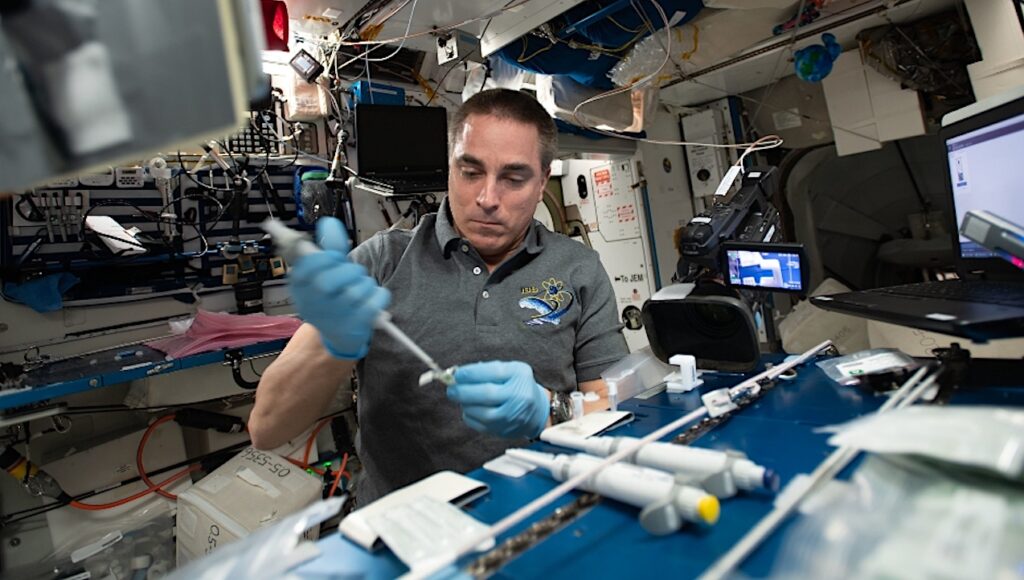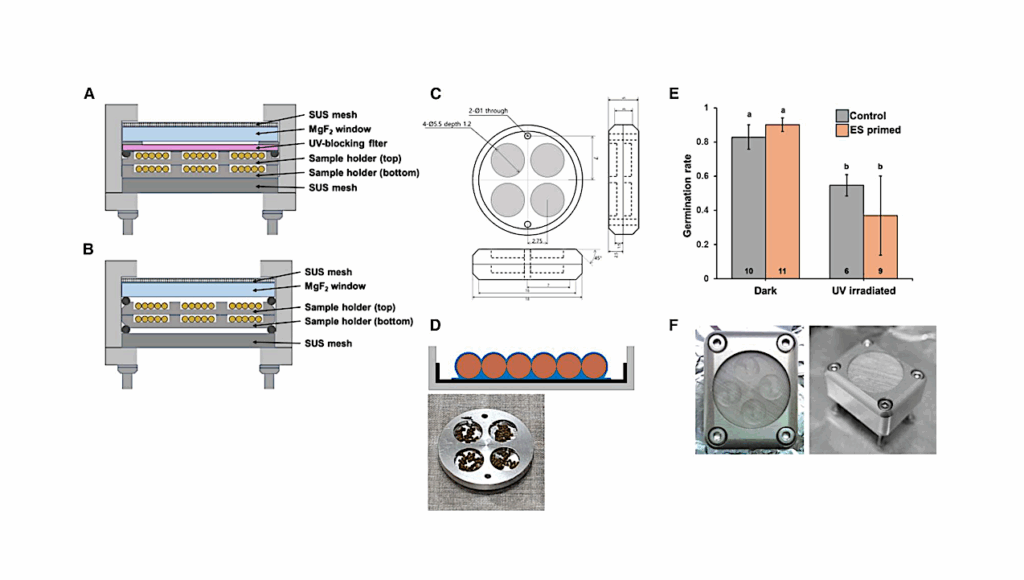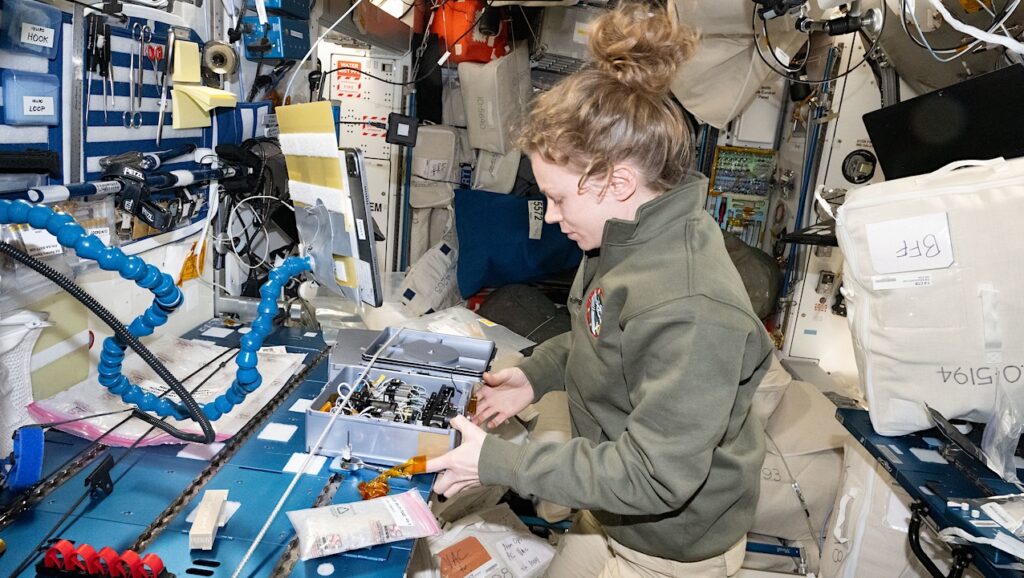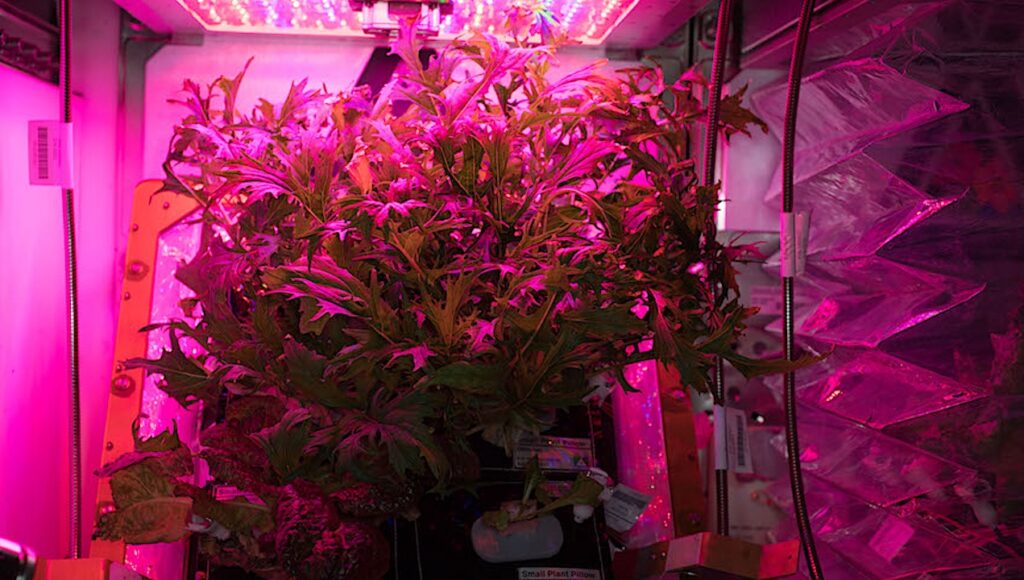NASA Spaceline Current Awareness List #1,081 5 January 2024 (Space Life Science Research Results)
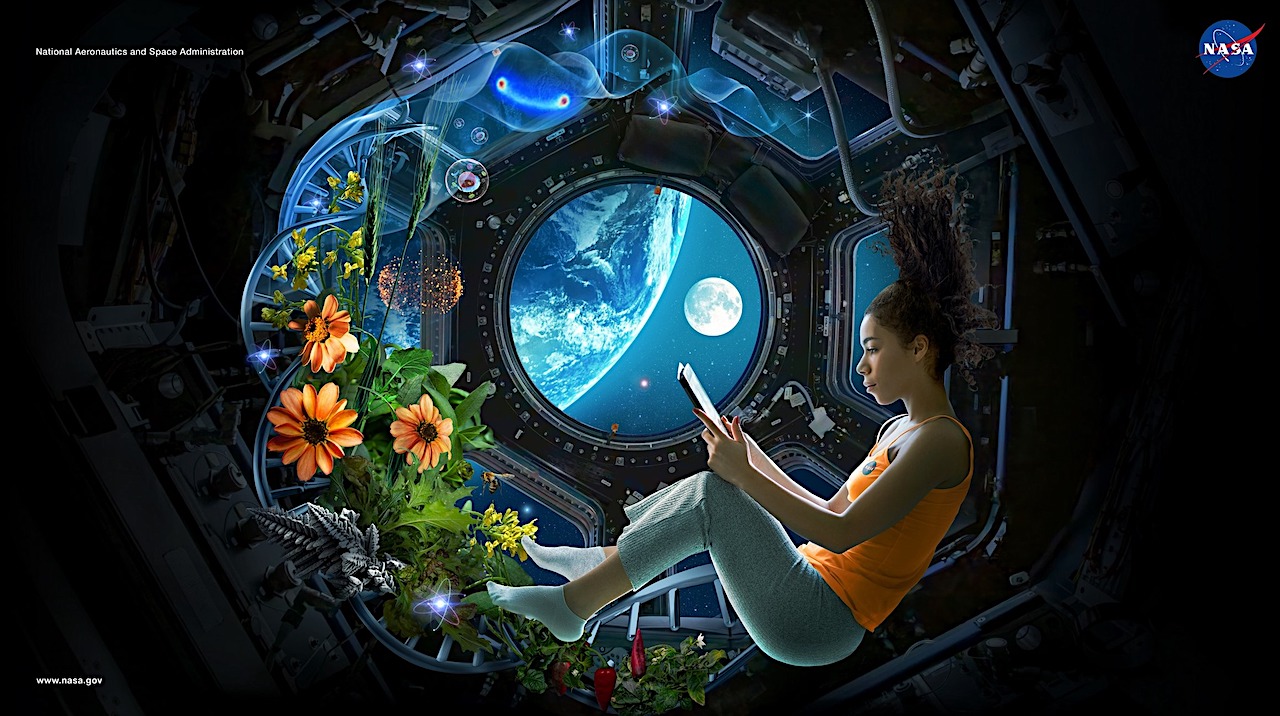
Space Biology — NASA
SPACELINE Current Awareness Lists are distributed via listserv and are available on the NASA Task Book website at https://taskbook.nasaprs.com/Publication/spaceline.cfm. Please send any correspondence to Shawna Byrd, SPACELINE Current Awareness Senior Editor, [email protected].
Call for articles to cite in the weekly lists: Authors at NASA Centers and NASA PIs—do you have an article that has recently published or will publish in the upcoming weeks within a peer-reviewed journal and is in the scope of space life sciences? If so, send it our way! Send your article to the email address mentioned above. Articles received by Wednesday will appear within that week’s list—articles received after Wednesday will appear the following week.
Papers deriving from NASA support:
- Chou J, Ramroop JR, Saravia-Butler AM, Wey B, Lera MP, Torres ML, Heavner ME, Iyer J, Mhatre SD, Bhattacharya S, Govind S.Drosophila parasitoids go to space: Unexpected effects of spaceflight on hosts and their parasitoids.iScience. 2024 Jan 19;27(1):108759.PI: S. GovindNote: ISS results. This article may be obtained online without charge.
Journal Impact Factor: 5.8
Funding: “Research was funded by NASA (NNX15AB42G), the National Science Foundation (1121817 and 2022235), the National Institutes of Health (1F31GM111052-01A1), and PSC-CUNY (63816-00 51 and 66619-00 54).” - Coulombe JC, Johannesdottir F, Burkhart KA, Brummer H, Allaire BT, Bouxsein ML.Changes in vertebral bone density and paraspinal muscle morphology following spaceflight and 1 year readaptation on Earth.JBMR Plus. 2023 Nov 8;7(12):e10810.PI: M.L. BouxseinNote: From the abstract: “Here, we investigated whether ~6 months of spaceflight led to regional differences in bone loss within the vertebral body.”
Journal Impact Factor: 3.8
Funding: “This study was supported by NASA grant NNX16AC15G and the National Space Biomedical Research Institute (NSBRI) via NASA NCC 9-58.” - Wheeler RM, Spencer LE, Bhuiyan RH, Mickens MA, Bunchek JM, van Santen E, Massa GD, Romeyn MW.Effects of elevated and super-elevated carbon dioxide on salad crops for space.J Plant Interact. 2024;19(1):2292219.PI: R.M. WheelerNote: From the abstract: “In this work, our goal was to test candidate leafy green crops in controlled environments that mimic conditions that might be encountered in spacecraft settings, like the International Space Station (ISS). We examined how elevated (1500 and 3000 ppm) and super-elevated (6000 ppm) CO2 would affect crop growth and nutritional value when compared to current ambient levels near 400 ppm.” This article may be obtained online without charge.
Journal Impact Factor: 3.2
Funding: “Funding for this research was provided by NASA Biological and Physical Sciences Program.” - Darby E, Armstrong S, Walters KJ.Bioregenerative dietary supplementation in space: Brassica rapa var. nipposinica and other Brassica cultivars.Life Sci Space Res. 2023 Dec 23. Online ahead of print.PI: K.J. WaltersNote: From the introduction: “The purpose of this study is to determine how different cultivars of mizuna and related mustards, including cultivars of Brassica juncea and Brassica carinata, react to an environment like that of the ISS and to determine which cultivars provide optimal biomass, phytonutrient, and mineral yields in a compact space.”
Journal Impact Factor: 2.5
Funding: “This work was funded by the NASA Space Biology Program grant 80NSSC22K0205.” - Meer E, Grob SR, Lehnhardt K, Sawyer A.Ocular complaints and diagnoses in spaceflight.npj Microgravity. 2024 2024/01/02;10(1):1.Note: This article may be obtained online without charge.
Journal Impact Factor: 5.1
Funding: “We would like to acknowledge the Translational Research Institute of Space Health through NASA Cooperative Agreement NNX16AO69A for support of this work. This work was also substantially supported by the UC Space Health, the UCSF Department of Orthopedic Surgery, and the UCSF Department of Ophthalmology.” - Waisberg E, Ong J, Paladugu P, Kamran SA, Zaman N, Tavakkoli A, Lee AG.Radiation-induced ophthalmic risks of long duration spaceflight: Current investigations and interventions.Eur J Ophthalmol. 2023 Dec 27:11206721231221584. Review. Online ahead of print.PI: A. TavakkoliNote: This article may be obtained online without charge.
Journal Impact Factor: 1.7
Funding: “The author(s) disclosed receipt of the following financial support for the research, authorship, and/or publication of this article: This work was supported by NASA Grant [80NSSC20K183]: A Non-intrusive Ocular Monitoring Framework to Model Ocular Structure and Functional Changes due to Long-term Spaceflight.” - Perkins RA, Gallo CA, Ivanoff AE, Yates KM, Schkurko CM, Somers JT, Newby NJ, Myers JG Jr, Prabhu RK.Modeling and simulation credibility assessments of whole-body finite element computational models for use in NASA extravehicular activity applications.Comput Methods Biomech Biomed Engin. 2023 Dec 21;1-14.Note: From the introduction: “Computational finite element (FE) models are used in suited astronaut injury risk assessments; however, these models’ verification, validation, and credibility (VV&C) procedures for simulating injuries in altered gravity environments are limited. Our study conducts VV&C assessments of THUMS and Elemance whole-body FE models for predicting suited astronaut injury biomechanics using eight credibility factors, as per NASA-STD-7009A.” This article may be obtained online without charge.
Journal Impact Factor: 1.6
Funding: “The authors would like to acknowledge the NASA Human Research Project (HRP) for supporting this work.” - Wernlé K, Thiel CS, Ullrich O.Increased H3K9me3 and F-actin reorganization in the rapid adaptive response to hypergravity in human T lymphocytes.Int J Mol Sci. 2023 Dec 7;24(24):17232.Note: From the abstract: “Our study explored the impact of hypergravity on human T cells, which experience additional acceleration forces beyond Earth’s gravity due to various factors, such as pulsatile blood flow, and technology, such as high-performance aircraft flights or spaceflights.” This article is part of Special Issue “Biomechanical Interaction between Cell and Its Microenvironment” (https://www.mdpi.com/journal/ijms/special_issues/X9VZHLXI23) and may be obtained online without charge.
Journal Impact Factor: 5.6
Funding: C.S. Thiel and O. Ullrich are affiliated with NASA Kennedy Space Center. - Dobrokhotov V, Larin A, Viugina E, Emberton A, Livchak A, Cremer JT Jr, Gary CK.A compact monitor for ethylene and other plant-produced volatile organic compounds for NASA space missions.Sensors (Basel). 2023 Dec 8;23(24):9713.Note: From the introduction: “Human missions in space, from the International Space Station to potential human exploration of the Moon, Mars and beyond, will require advanced systems to maintain an environment supporting human life. Smart greenhouses are, therefore, necessary for a fresh food supply in long-term space missions. A key function is to reproduce the Earth’s natural ecosystem, aiming at the ‘closure’ of the air, water and food cycles in a so-called closed ecological life support system (CELSS). The main demonstrated advantages of CELSSs over more classical physicochemical systems are both psychological and logistic. The ‘Earth-like’ habitat and the production of fresh food are quite attractive features for humans in very confined and harsh environments.”
Journal Impact Factor: 3.9
Funding: “This work was sponsored by NASA STTR grants #80NSSC20C0323 and #80NSSC22CA027.”
Other papers of interest:
- Levasseur S, Purvis N, Trozzo S, Chung SH, Ades M, Drudi LM.Venous thromboembolism in exploration class human spaceflight.Aerosp Med Hum Perform. 2024 Jan;95(1):45-53. Review.Note: From the abstract: “A recent finding of a deep venous thrombosis during spaceflight has prompted the need to clarify mechanisms and risks of venous thromboembolism (VTE). In turn, mitigation countermeasures, diagnostic modalities, and treatment options must be explored. The objective of this review was to synthesize current evidence on VTE in spaceflight.”
- Shishkina V, Kostin A, Alexeeva N, Klochkova S, Nikityuk D, Volodkin A, Buchwalow I, Tiemann M, Atiakshin D.Histoarchitecture of stromal collagen fibers in gastrointestinal hollow organs of mice after a 30-day spaceflight.Heliyon. 2024 Jan 15;10(1):e23287.Note: This article may be obtained online without charge.
- Zhang C, Chen Y, Fan Z, Xin B, Wu B, Lv K.Sleep-monitoring technology progress and its application in space.Aerosp Med Hum Perform. 2024 Jan;95(1):37-44. Review.Note: From the abstract: “This paper reviews the subjective and objective sleep evaluation methods for on-orbit applications, summarizes the progress, advantages, and disadvantages of current ground sleep-monitoring technologies and equipment, and looks forward to the application prospects of new sleep-monitoring technologies in spaceflight.”
- Dontre AJ.Weighing the impact of microgravity on vestibular and visual functions.Life Sci Space Res. 2024 Feb;40:51-61. Review.
- Feltman KA, Kelley AM.Transcranial direct current stimulation and aviator performance during simulated flight.Aerosp Med Hum Perform. 2024 Jan;95(1):5-15.Note: From the abstract: “Transcranial direct current stimulation (tDCS) is a promising method for maintaining cognitive performance. Anticipated changes in rotary-wing aircraft are expected to alter aviator performance.”
- Gonzalez Viejo C, Harris N, Fuentes S.Assessment of changes in sensory perception, biometrics, and emotional response for space exploration by simulating microgravity positions.Food Res Int. 2024 Jan;175:113827.Note: From the introduction: “The current study endeavors to investigate the variations in sensory perception, specifically regarding aromas, tastes, and mouthfeel, using descriptive sensory analysis; furthermore, it assessed the physiological and the emotional response of participants using biometrics from video analysis under different seating conditions–normal seating and two reclining angles–utilizing simulated microgravity chairs.”
- Luo J, Yang J, Zhao J, Cui B, Cui Y, Tang S, Wang A, Chen Y, Wang J, Yan J, Wang G, Han H, Du J.Effects of short-term simulated microgravity on changes in extracellular space structure and substance diffusion and clearance.Acta Astronaut. 2024 Feb;215:405-14.Note: Hindlimb unloading study.
- Liu Z, Luo G, Du R, Kan G, Han X, Zhong G, Xing W, Cui Y, Sun W, Li J, Li Y, Zhao D, Yuan X, Jin X, Han Y, Sun H, Ling S, Li Y.Simulated spaceflight-induced cardiac remodeling is modulated by gut microbial-derived trimethylamine N-oxide.iScience. 2023 Dec 15;26(12):108556.Note: Head-down bedrest and hindlimb unloading study. This article may be obtained online without charge.
- Ohrui N, Iino Y, Kuramoto K, Kikukawa A, Okano K, Takada K, Tsujimoto T.G-induced loss of consciousness prediction using a support vector machine.Aerosp Med Hum Perform. 2024 Jan;95(1):29-36.
- Gorbacheva EY, Sventitskaya MA, Biryukov NS, Ogneva IV.The oxidative phosphorylation and cytoskeleton proteins of mouse ovaries after 96 hours of hindlimb suspension.Life (Basel). 2023 Dec 12;13(12):2332.Note: Hindlimb unloading study. This article and the article directly below (Pacifici et al.) are part of Special Issue “Microgravity and Spaceflight: New Insights and Potential Defense Strategies” (https://www.mdpi.com/journal/life/special_issues/4960LB6E64). The Special Issue also includes an article from previous Current Awareness List #1,061 https://doi.org/10.3390/life13071423. Additional articles will be forthcoming and may be found in the link to the Special Issue. This article may be obtained online without charge.
- Pacifici F, Andreadi A, Arriga R, Pastore D, Capuani B, Bonanni R, Della-Morte D, Bellia A, Lauro D, Donadel G.Omega-3-enriched diet improves metabolic profile in Prdx6-deficient mice exposed to microgravity.Life (Basel). 2023 Nov 22;13(12).Note: Hindlimb unloading study. This article and the article directly above (Gorbacheva et al.) are part of Special Issue “Microgravity and Spaceflight: New Insights and Potential Defense Strategies” (https://www.mdpi.com/journal/life/special_issues/4960LB6E64). This article may be obtained online without charge.
- Chen Z, Li Y, Rasheed M, Wang H, Lei R, Zhao T, Deng Y, Ma H.Altered expression of inflammation-associated molecules in striatum: An implication for sensitivity to heavy ion radiations.Front Cell Neurosci. 2023 Dec 1;17:1252958.Note: This article is part of Research Topic “Space and Neural Cell: The Impact of Space Environment on Neurological Function and Their Molecular Mechanistic Insights” (https://www.frontiersin.org/research-topics/53086/space-and-neural-cell-the-impact-of-space-environment-on-neurological-function-and-their-molecular-mechanistic-insights#overview). The Research Topic also includes an article from previous Current Awareness List #1,072 https://doi.org/10.3389/fncel.2023.1275771. This article may be obtained online without charge.
- Cox BD, McHail DG, Blacker KJ.Personal hypoxia symptoms vary widely within individuals.Aerosp Med Hum Perform. 2024 Jan;95(1):54-8.
- Yin Y, Yang J, Gao G, Zhou H, Chi B, Yang HY, Li J, Wang Y.Enhancing cell-scale performance via sustained release of the varicella-zoster virus antigen from a microneedle patch under simulated microgravity.Biomater Sci. 2024 Jan 2. Online ahead of print.
- Zimmermann PH, Jansen S, Klußmann JP.[ENT in zero g: The cosmic challenges of otolaryngology].Laryngorhinootologie. 2023 Dec 22. German. Online ahead of print.Note: From the abstract: “Crewed spaceflight places special demands on the human body, including the organs in the ENT region. These organs play a critical role in maintaining the health and safety of astronauts in space. In this paper, we review common ENT problems of spaceflight, including upper airway edema, middle ear and mastoid effusions, hearing loss, and dizziness with nausea.”
- Sarimov RM, Serov DA, Gudkov SV.Hypomagnetic conditions and their biological action (review).Biology (Basel). 2023 Dec 11;12(12):1513. Review.Note: This article is part of Special Issue “The Rules of Life Rethought: Latest Progress in Quantum Biology” (https://www.mdpi.com/journal/biology/special_issues/TB64R52SG4) and may be obtained online without charge.


